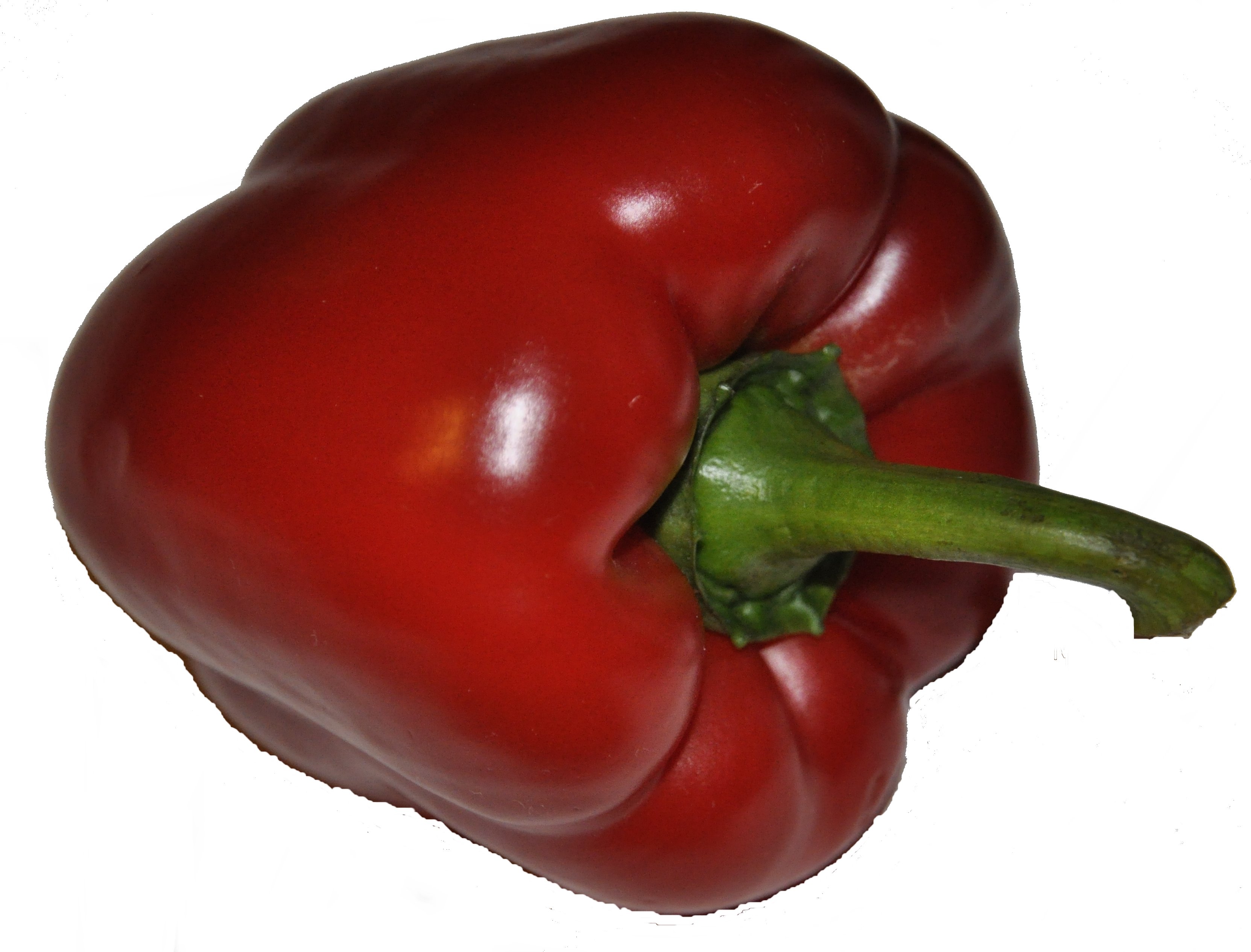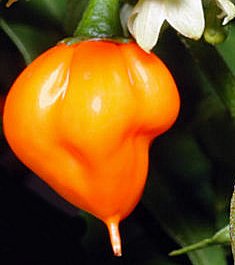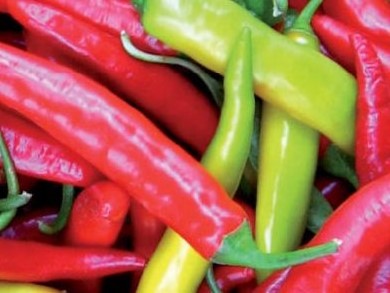 Capsicum annuum (“annual”) is the most widely distributed pepper species in the world. The fruits of the different varieties show considerable diversity; their size ranges from 1–25 cm, and their hotness extends from the very mild, slightly sweet bell pepper to the small but very hot jalapeño. Also, the form and color of the fruit is many-faceted.
Capsicum annuum (“annual”) is the most widely distributed pepper species in the world. The fruits of the different varieties show considerable diversity; their size ranges from 1–25 cm, and their hotness extends from the very mild, slightly sweet bell pepper to the small but very hot jalapeño. Also, the form and color of the fruit is many-faceted.
The variety C. annuum var. acuminate is known as cayenne pepper, although over the course of time this name has in fact been applied to several different varieties — indeed, even in differing species.

Capsicum chinense, despite the name, originated in the Caribbean, and includes the hottest species known, including Habeneros and Scotch Bonnet. A typical feature, apart from intense spiciness, is the characteristic aroma. Varieties of C. chinense prefer a damp, tropical climate, as for instance with the varieties fatalli in tropical Africa, datil in Florida, adjuma in Surinam, and naga morich in Bangladesh. All have in common (in addition to extreme “hotness”) a delicate, fruity aroma absent from all other species, and characteristic exclusively of the raw fruit.
(image: from Aka; Creative-Commons license)

Capsicum frutescens usually has small — only 1–3 cm long — “hot” fruit, and distinguishes itself through a characteristic aroma. This species is used above all as a condiment. Well-known varieties include piri-piri (African devil) and Thai chili (bird’s eye). The variety “Tabasco” serves as the basis for the well-known sauce of the same name.
Capsicum baccatum (“berry-like”) came originally from Bolivia or perhaps Peru, and the large, elongated, hot fruit is distinguished by its very unique, fruity bouquet. The variety C. baccatum var. pendulum is called “Aji” in South America, and was even known among the Incas. C. baccatum varieties are a solid component of today’s Peruvian cuisine, making a delicacy, for example, out of Cuy chactado.
In the event you are curious: For this dish, the disemboweled guinea pigs (Cuy) are processed whole, in the manner of chickens. The animals are rubbed with Aji spice, and after marinating for several hours are browned in a pan. Potatoes and a spicy sauce are added. Generally the guinea pigs are served whole, on a plate, head and all.
Capsicum pubescens (“hairy”) grows especially in higher regions of the Andes, from Columbia to Bolivia, but also in southern Mexico. In contrast to the other Capsicum species, its seeds are black. Representative varieties include Rocoto (Bolivia, Peru) and Manzano (Mexico). C. pubescens is the only Capsicum species tolerant to light frost.
This is a part of the article:
- The Biochemistry of Peppers,
Klaus Roth,
ChemistryViews Mag. 2014.
DOI: 10.1002/chemv.201400031




